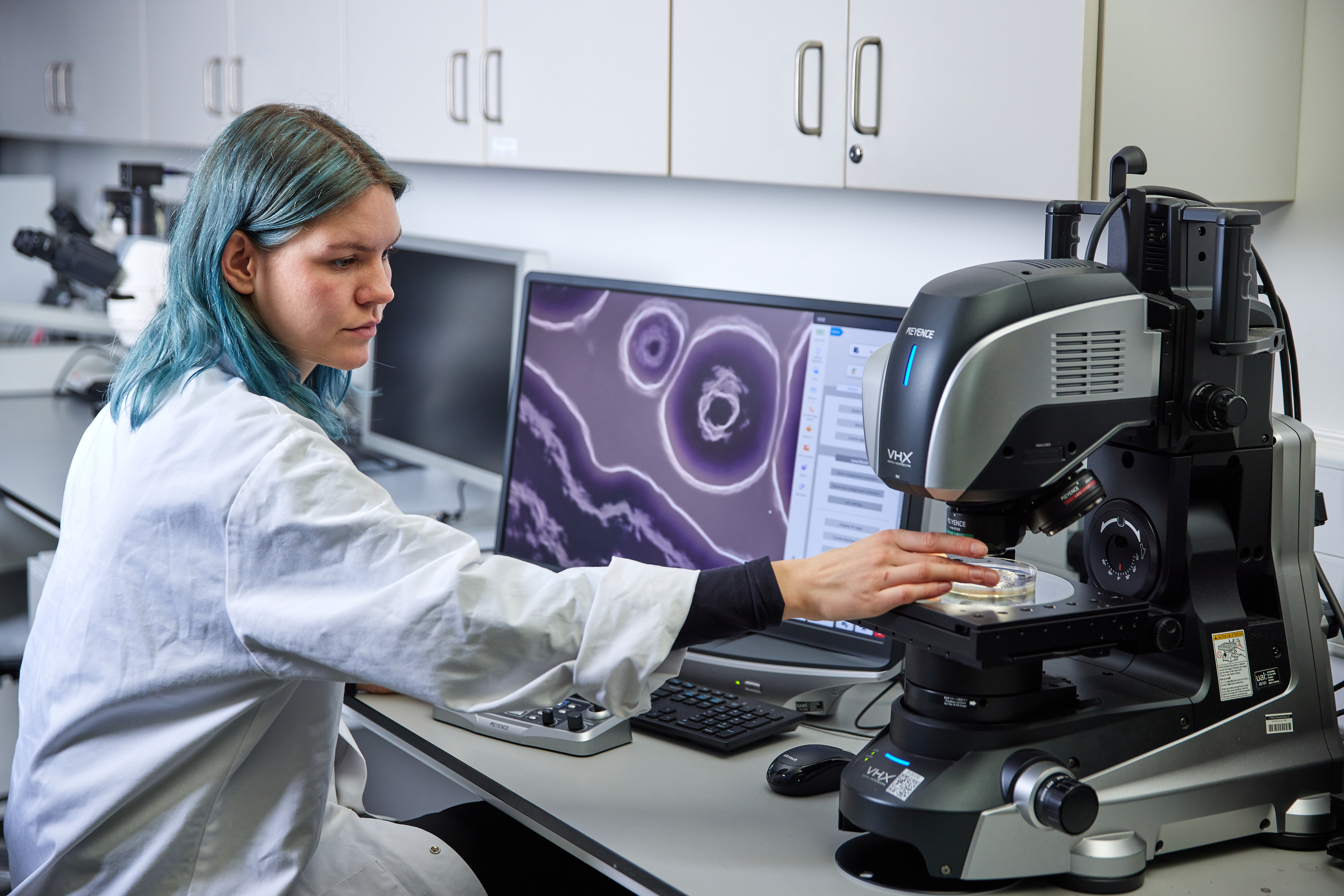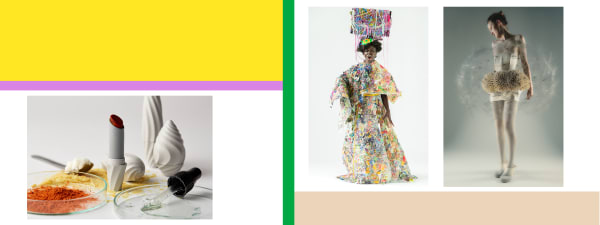Central Saint Martins graduate Charlotte Werth has been developing her bacterial textile printing innovation in her role as the first Designer in Residence for Maison/0, the Central Saint Martins LVMH Platform for Regenerative Luxury. This month Charlotte will launch her machine printed textile collection, Automating Violacein, at Future Fabrics Expo - the primary international platform for fashion material solutions.
-
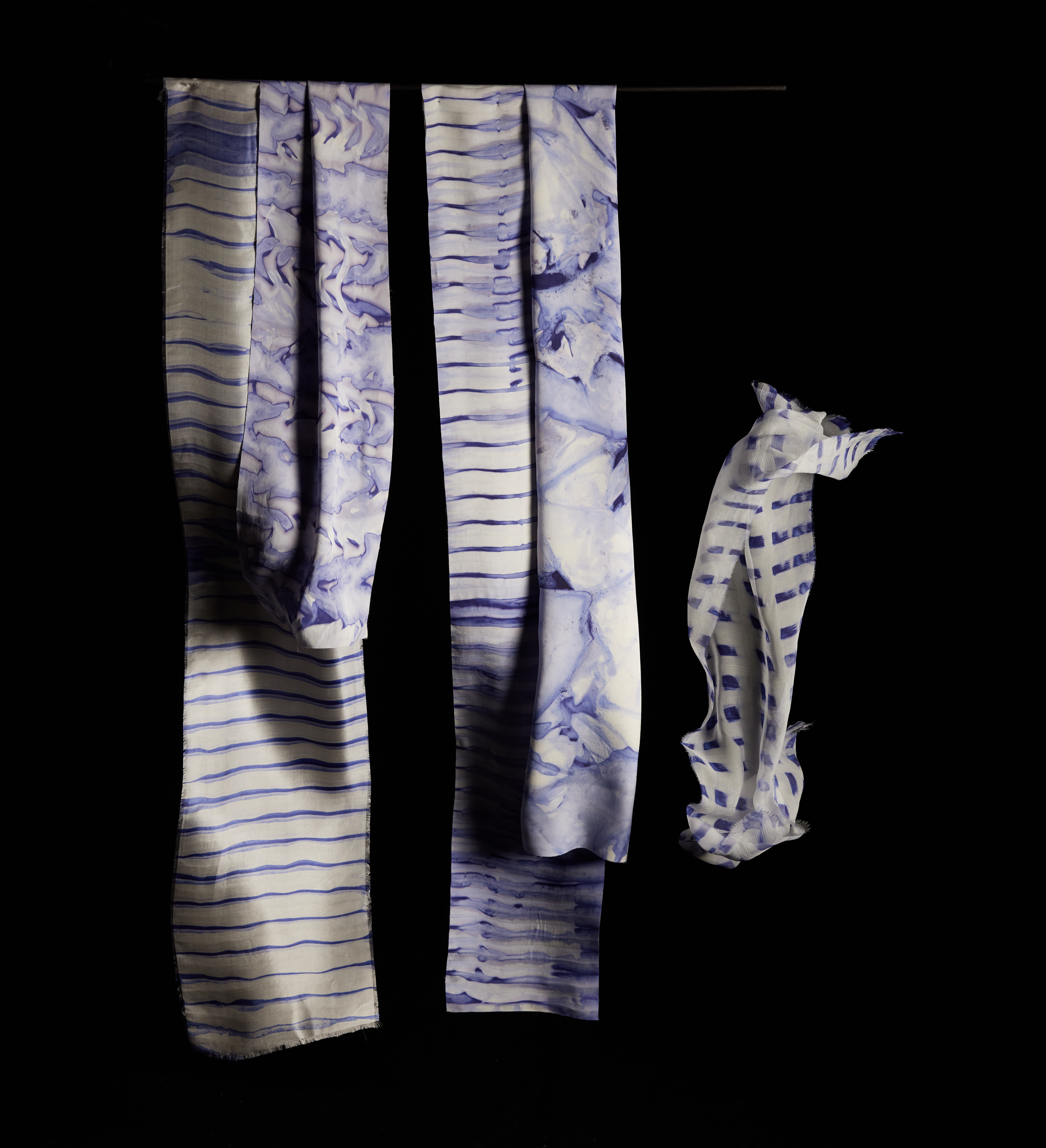
Automating Violacein collection by Charlotte Werth 2023 - photography Paul Cochrane for Maison 0
-
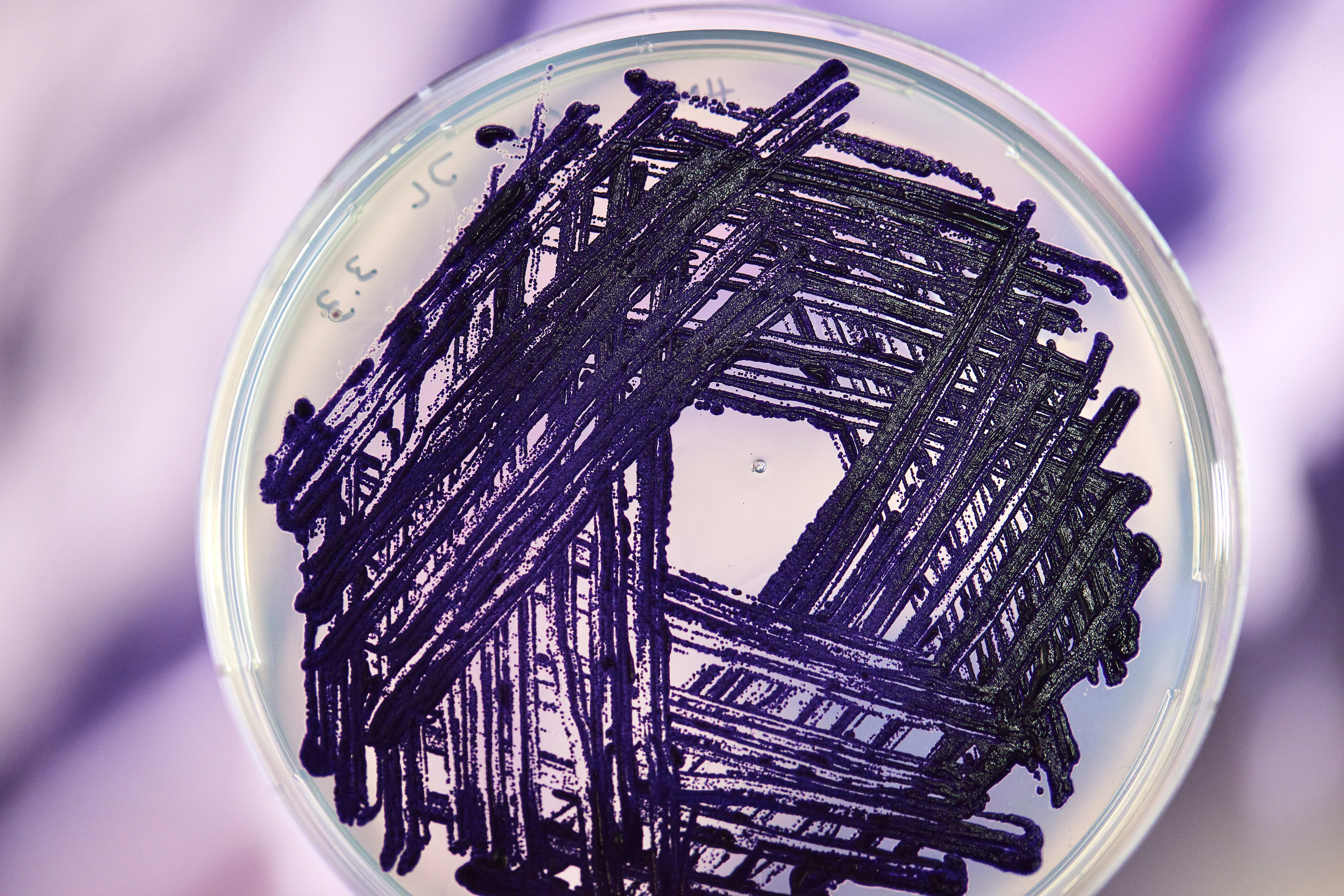
Close up of bacteria Janthinobacterium lividum, photography Paul Cochrane for Maison 0.
-
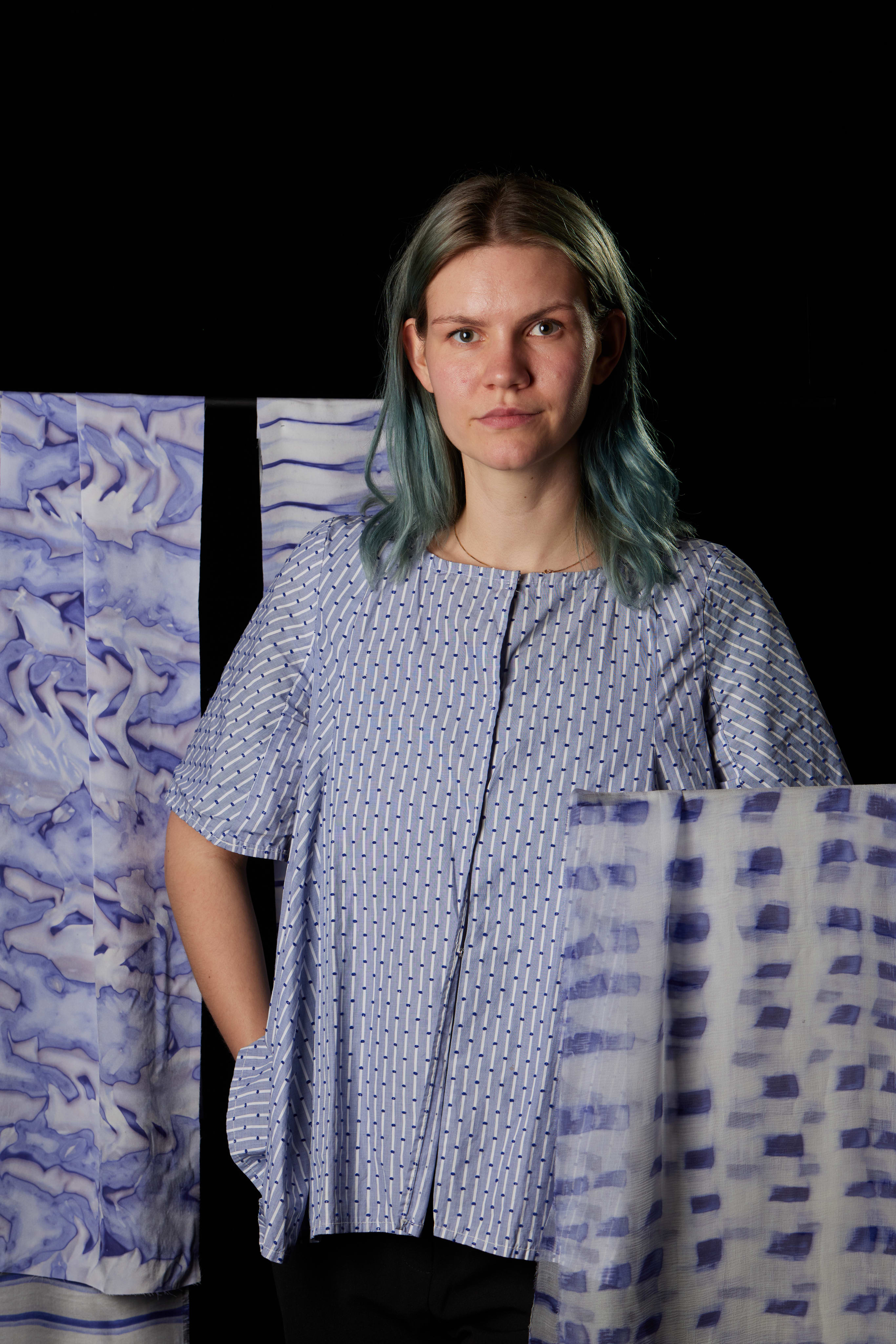
Charlotte Werth- Maison 0 Designer in residence 2023 - photography Paul Cochrane
A designer working at the intersection of textile and biodesign, Charlotte graduated from MA Material Futures at Central Saint Martins in June 2022, one of our Maison/0 Green Trail Award winners. She has been researching bacteria dyeing processes for six years, since being an Exchange student during her BA studies at Denmark Design School, first drawn to what she describes as “a combination of beauty and relevance”.
For her final Material Futures project last year, Charlotte developed an automated printing process using bacteria. Working with Maison/0 Director Professor Carole Collet, the residency has been an opportunity to develop on this research, examining how to scale up and automate the co-design of repetitive textile patterns with her pigment-producing bacteria.
A nutrient bath made with a base of yeast extract, salt, protein and glucose is the food for the bacteria, and it has no chemicals. The bacteria is added and in the presence of oxygen, it starts to grow and populate, turning a cloudy yellow. When applied to the textile, it’s the perfect environment for the bacteria to produce pigment.
Charlotte prints on textile using the Bacteria Dye Machine that she developed for her final MA project. It is designed to slowly move fabrics through the live bacterial bath, pausing long enough to allow for pigment depositing. A low-energy built-in UV lighting system sterilises the cloth as it comes in the main chamber, removing the need for high energy autoclaving process. The same sterilisation process is in place as the fabric exits the machine to remove any live active bacteria. What is left are colour traces created by Janthinobacterium lividum.
By playing with folding, pleating, resist techniques and multiple dye run throughs, Charlotte has produced a collection of scarves printed with unique patterns on luxury deadstock fabrics procured by Nona Source - fine silks, silk-viscose blend and wool. For this project, Charlotte has worked with a single blue/purple pigment so she could focus on elements like colourfastness and variety of patterns.
-
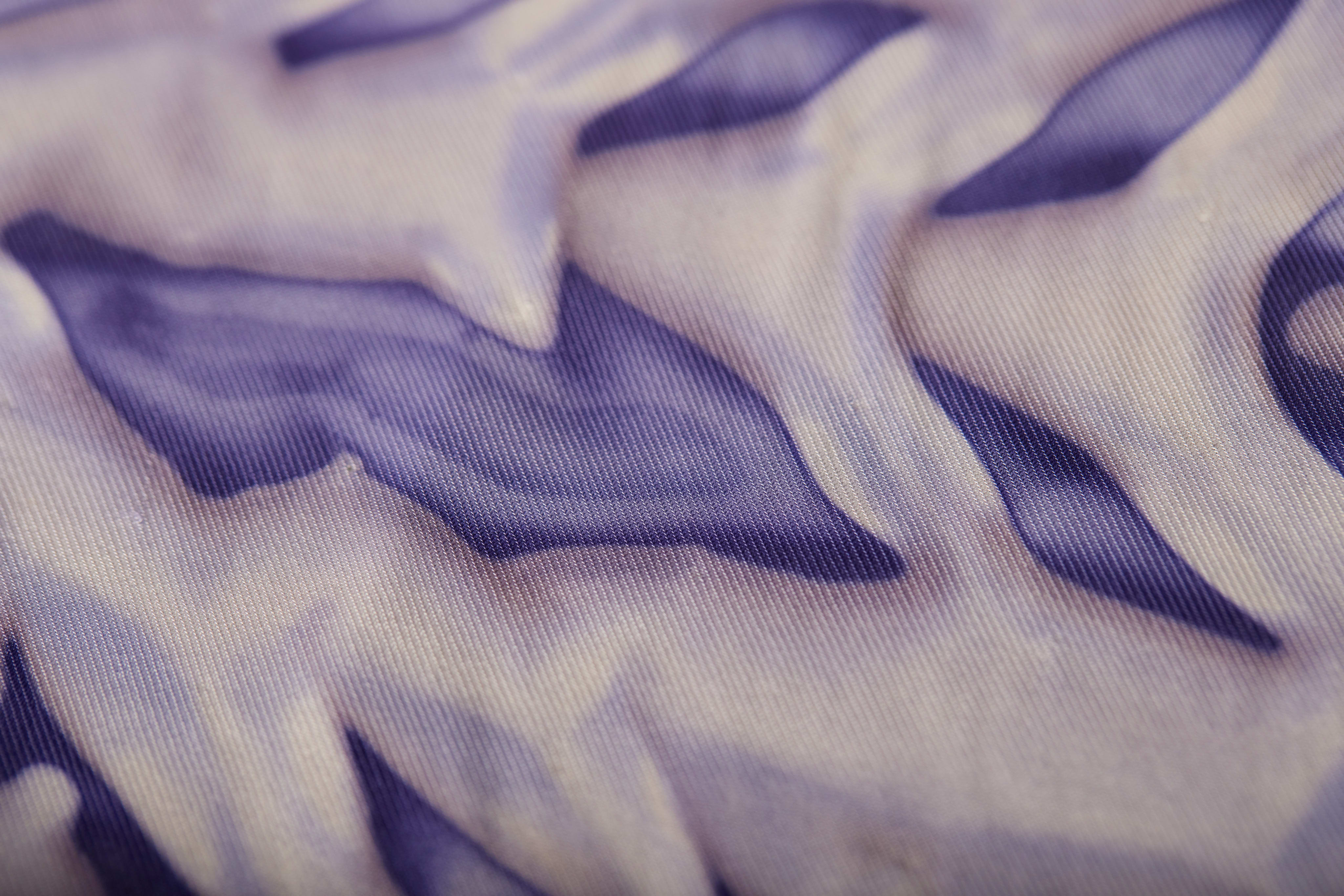
Bacterial print detail- Automating Violacein- Charlotte Werth 2023 - photography Paul Cochrane for Maison 0
-
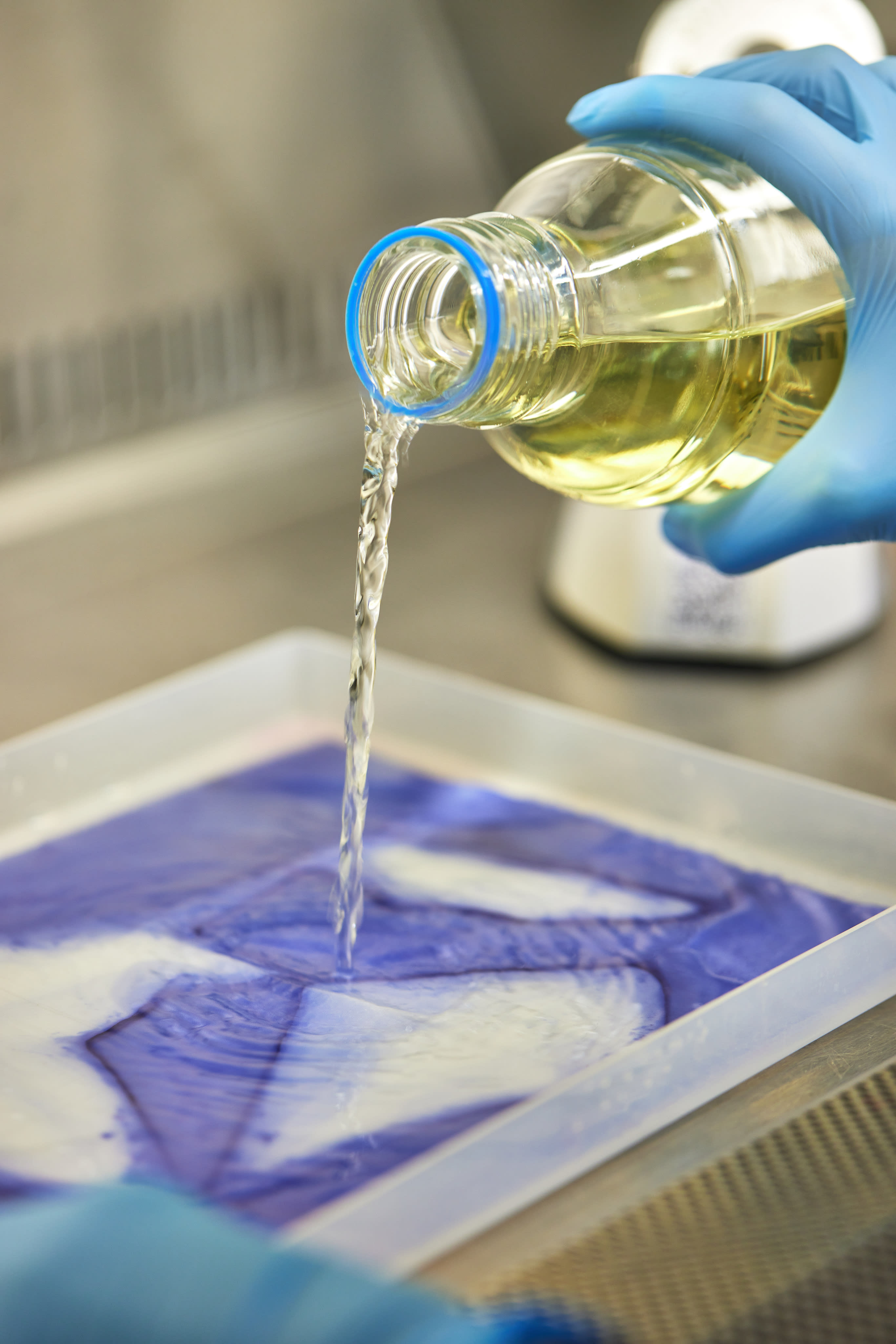
colour test in Grow Lab - Automating Violacein- Charlotte Werth 2023 - photography Paul Cochrane for Maison 0
-
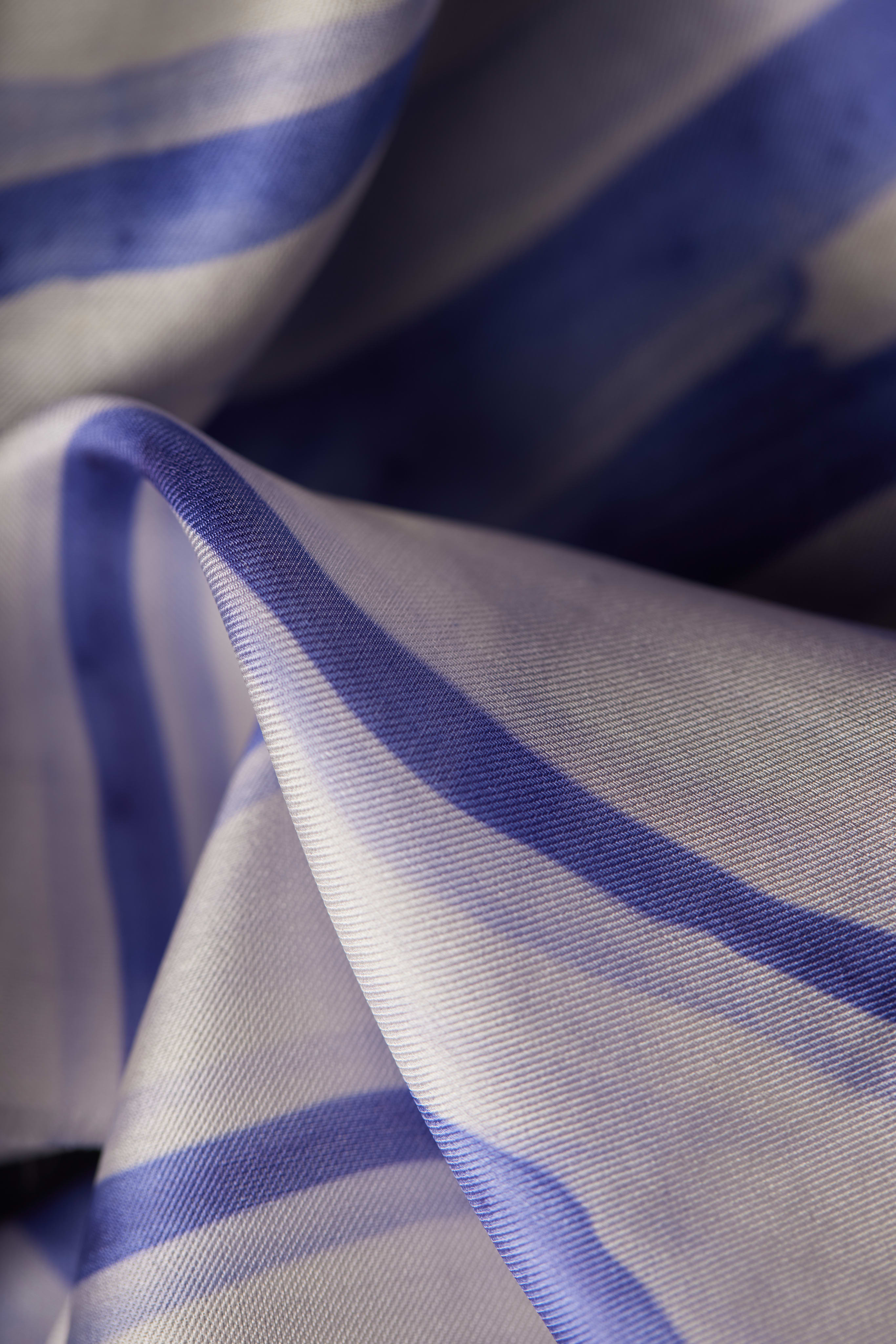
Bacterial print detail- stripe -Automating Violacein- Charlotte Werth 2023 - photography Paul Cochrane for Maison 0
-
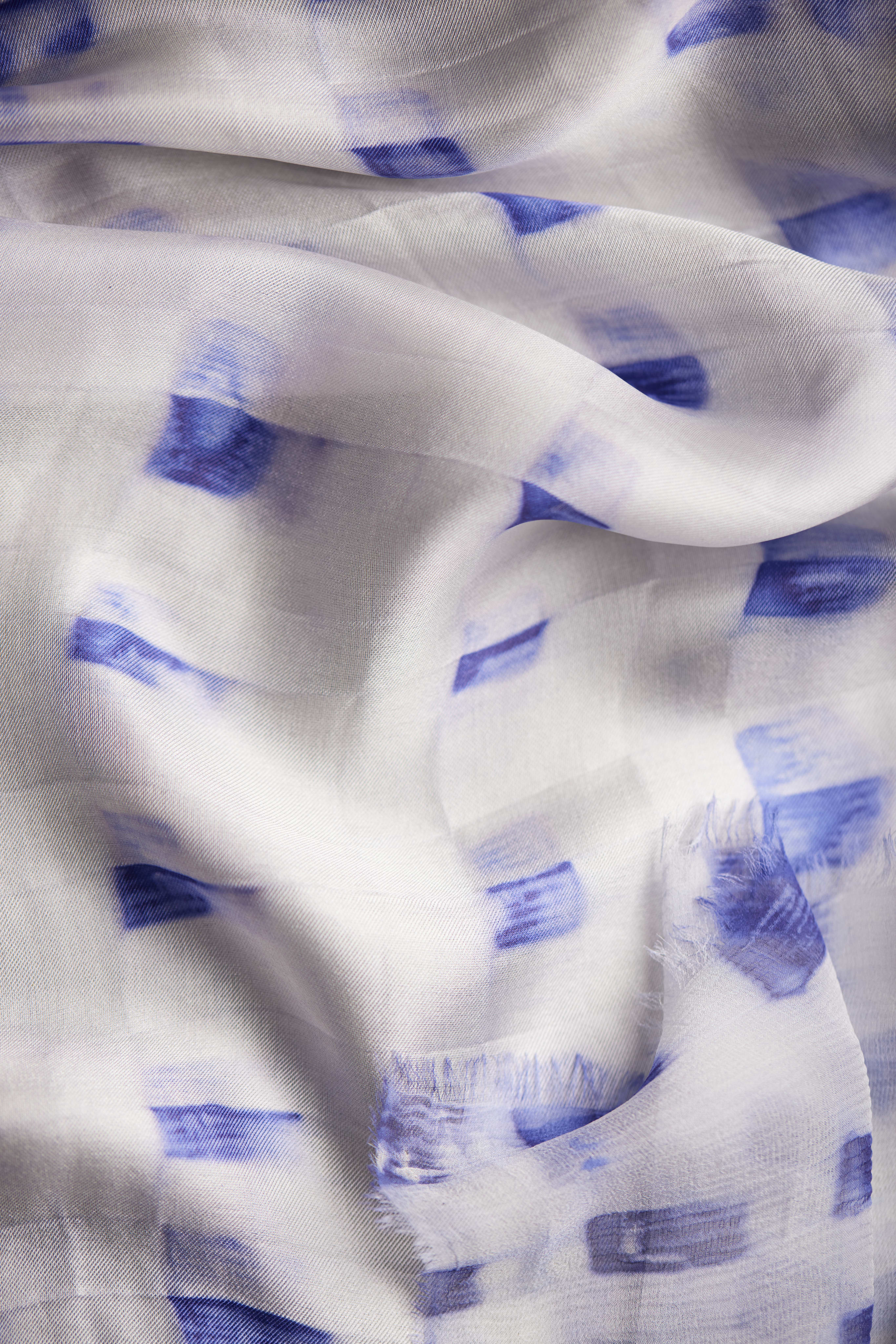
Bacterial print detail-check pattern- Automating Violacein- Charlotte Werth 2023 - photography Paul Cochrane for Maison 0
How does microbial dye colouring alter the textile creative process?
The biological world holds many solutions to our environmental textile challenges. For the past decade we have witnessed the development of promising new microbial dyes, now reaching commercial scale. Microbial research has evidenced clear environmental benefits including biodegradability and significant water-saving compared to synthetic dyes. Bacterial colours also work across fibre types (cellulose, keratin or synthetic) without the need for toxic mordanting.
For textile designers, the application of bacterial colour onto cloth is more than an environmentally beneficial technical process, it is a new platform for creativity. Every new technique calls for imaginative applications. This is the focus of the Automating Violacein collection designed and produced by Charlotte Werth for the design residency at Maison/0.
Research into Residency
The Maison/0 residency was created to support a recent graduate with the freedom to take forward their research and design at their own pace in a lab-equipped environment. The emphasis is on research, creativity, experimentation and innovation, free from the burden of an academic schedule. Charlotte’s residency has been supported by Professor Carole Collet and CSM teaching staff including our technicians in the Central Saint Martins Grow Lab.
Film direction: Mael Henaff.
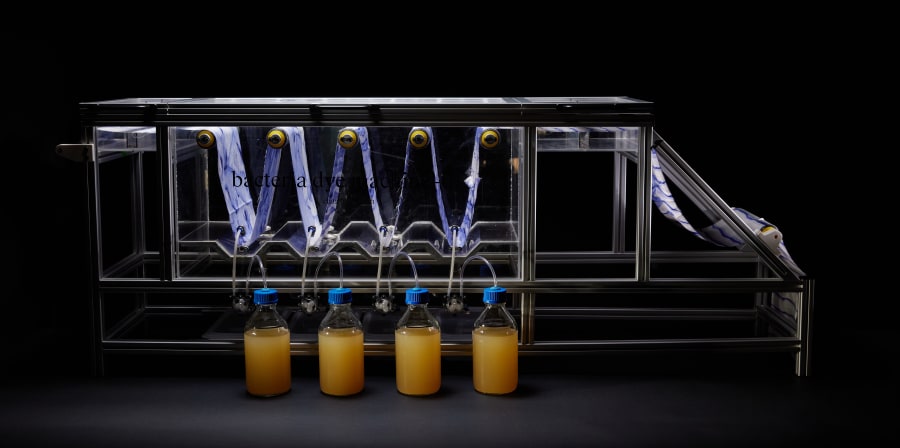
Maison/0 at Future Fabrics Expo
Maison/0 is the Central Saint Martins LVMH creative platform for regenerative luxury. Our mission is to prototype emergent and disruptive design concepts that can lead to the restoration of planetary health.
With this design residency research project, we aimed at leveraging the agency of creativity to augment the potential of biofabricated colour processes. The project will be showcased at the Future Fabrics Expo 2023, London, 26-28 June.
-
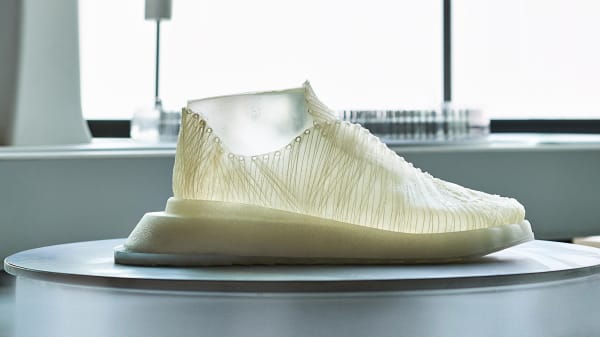
Jen Keane
